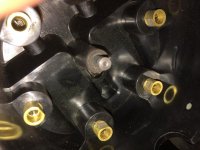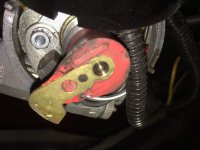B
Brian Hughey
Guest
Guest
Offline
Car runs like it is on three cylinders.
This car has been rebuilt from the ground up. Car ran fine for a couple of months. Then it began to stumble, I thought it was the fuel pump and I replaced it with an after market one while mine was being rebuilt. Ran fine for a couple of months.
It began to stumble again and I replaced the fuel pump again with the original one that was rebuilt. It ran for about a hour and began to stumble again.
I then began to believe it was something else and took the carburetors bowls apart and checked to see if the needles were tight and they were. Emptied the fuel tank to ensure it was clean. Checked the output of the pump, 1.3 l/min (No air in the fuel) Parked the car for a couple of hours came out and it ran fine again for an hour.
Signed
Puzzled!
Comments please
This car has been rebuilt from the ground up. Car ran fine for a couple of months. Then it began to stumble, I thought it was the fuel pump and I replaced it with an after market one while mine was being rebuilt. Ran fine for a couple of months.
It began to stumble again and I replaced the fuel pump again with the original one that was rebuilt. It ran for about a hour and began to stumble again.
I then began to believe it was something else and took the carburetors bowls apart and checked to see if the needles were tight and they were. Emptied the fuel tank to ensure it was clean. Checked the output of the pump, 1.3 l/min (No air in the fuel) Parked the car for a couple of hours came out and it ran fine again for an hour.
Signed
Puzzled!
Comments please

 Hi Guest!
Hi Guest!

 smilie in place of the real @
smilie in place of the real @
 Pretty Please - add it to our Events forum(s) and add to the calendar! >>
Pretty Please - add it to our Events forum(s) and add to the calendar! >> 




